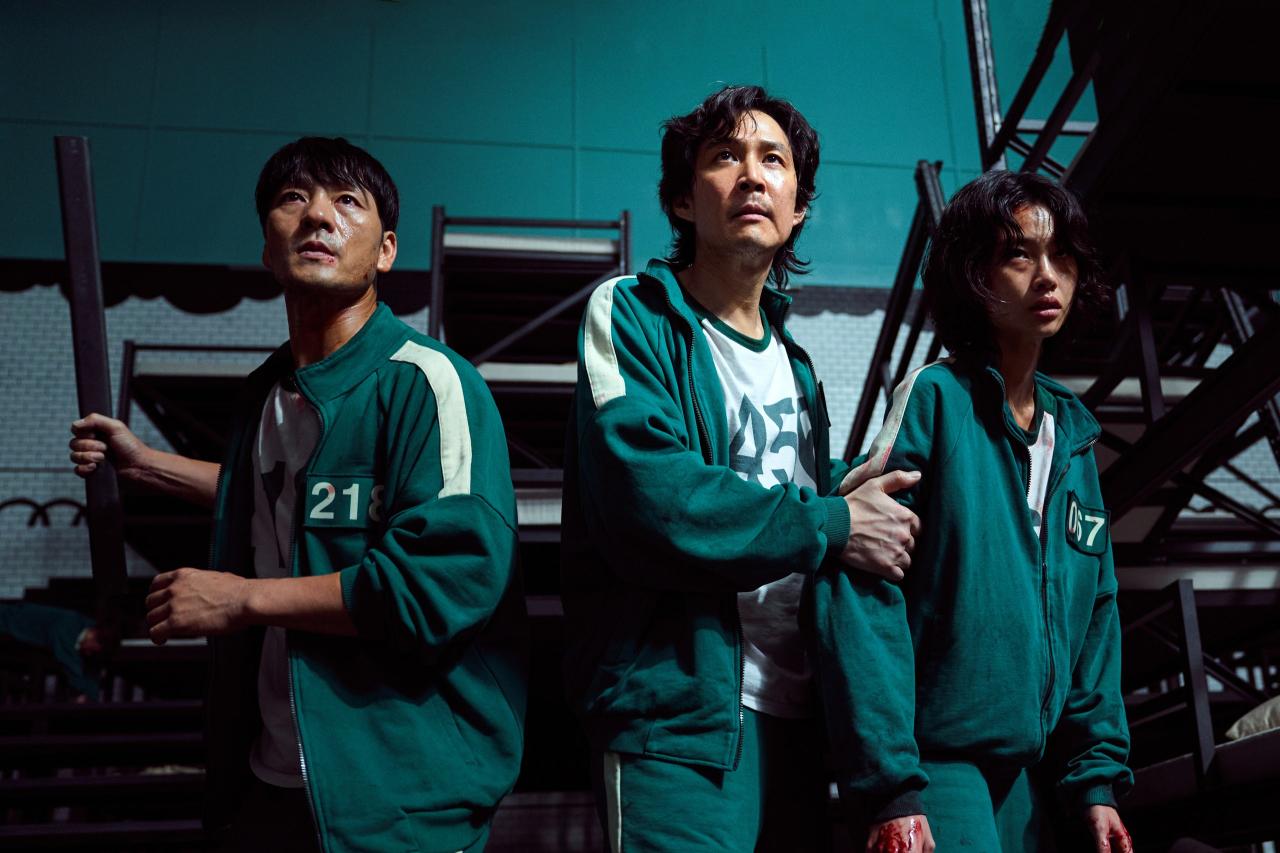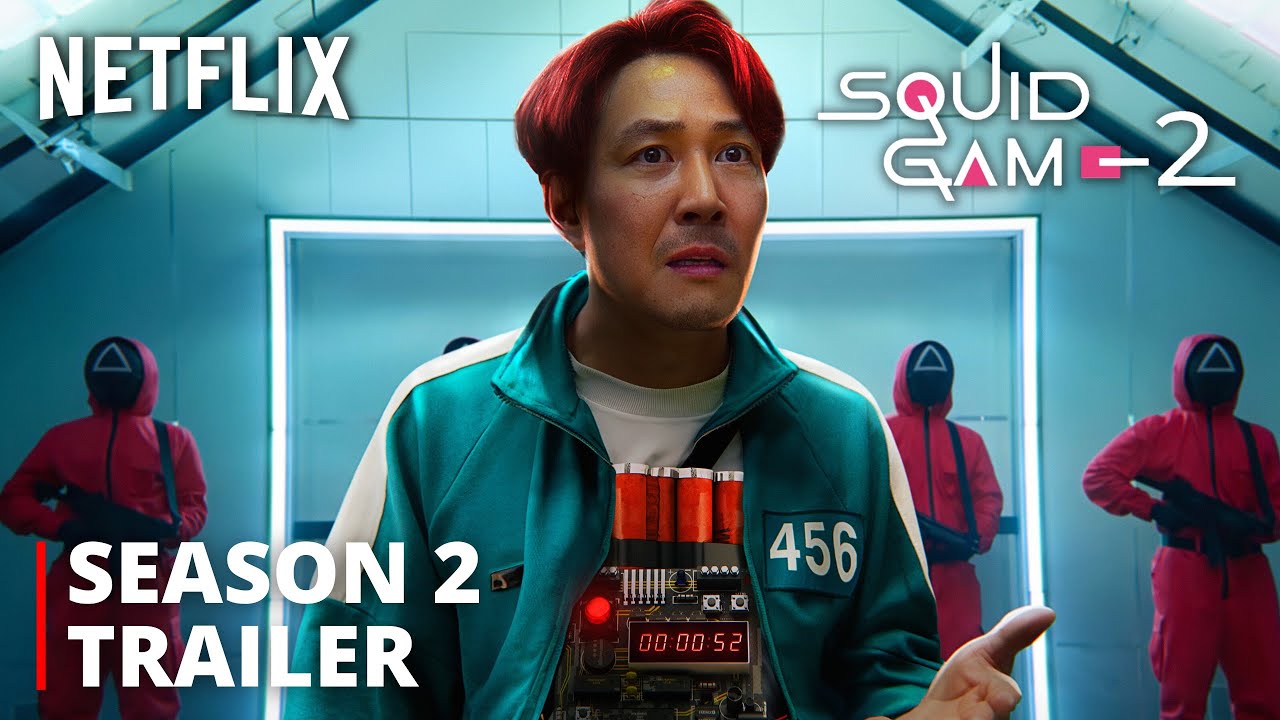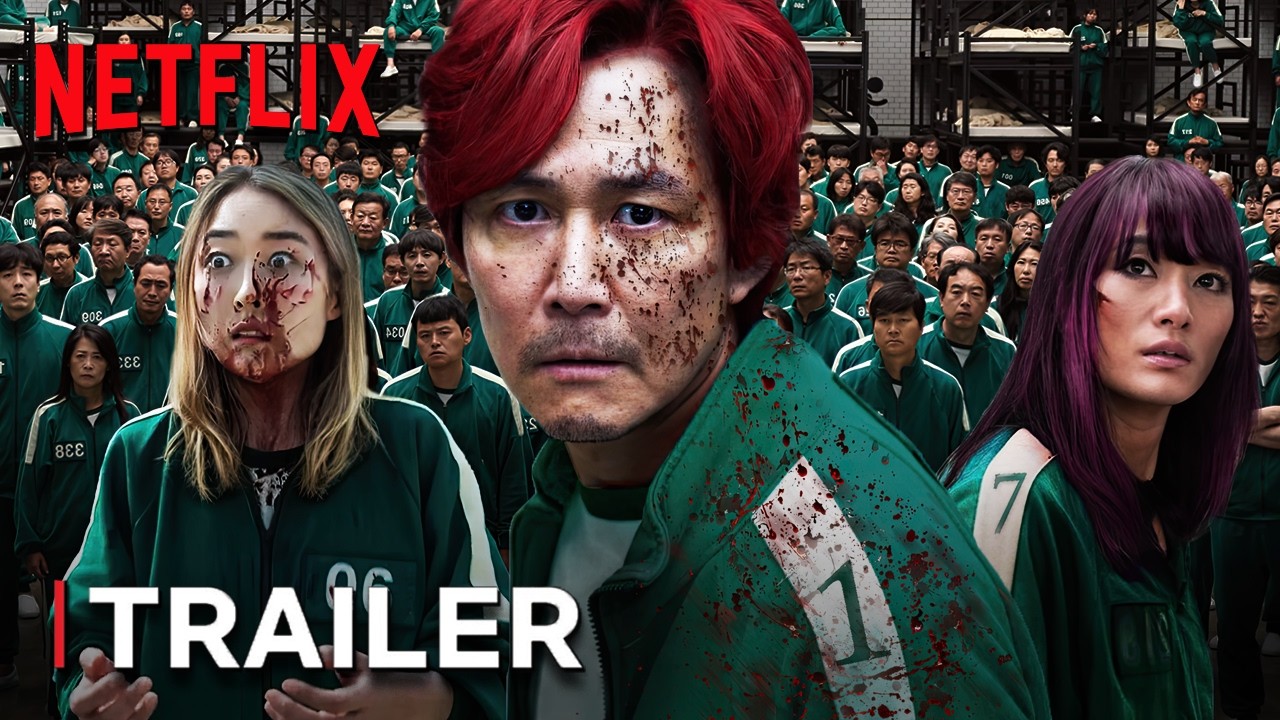Prepare to dive into the captivating realm of Squid Game Season 2 Part 2, a series that has gripped audiences globally. This latest installment promises an immersive journey into character development, plot twists, and social commentary that will leave you captivated from start to finish.
The second part of the season picks up where the first left off, delving deeper into the motivations and conflicts that drive the characters’ actions. New faces emerge, bringing fresh perspectives and adding layers of complexity to the narrative.
Character Development: Squid Game Season 2 Part 2
Season 2, Part 2 of Squid Game delves deeper into the lives and motivations of both returning and newly introduced characters. The experiences and revelations of Season 1 have profoundly shaped the characters, leading to significant evolutions and conflicts.
Returning characters like Gi-hun, Sang-woo, and Sae-byeok face the consequences of their actions and the emotional scars of the deadly games. New characters, such as the mysterious Front Man and his assistant, The Salesman, add complexity and intrigue to the narrative.
Motivations and Conflicts
Gi-hun, driven by guilt and a desire for redemption, seeks to expose the truth behind the games and bring justice to the victims. Sang-woo, consumed by ambition and desperation, grapples with his past choices and the weight of his actions.
Sae-byeok, haunted by her tragic past, fights for survival and the chance to provide a better life for her family.
The Front Man, a enigmatic figure with a dark past, orchestrates the games with cold detachment. The Salesman, a charismatic recruiter, entices potential players with promises of wealth and a second chance. Their motivations and conflicts drive the narrative forward, creating tension and suspense.
Plot and Storyline
Squid Game Season 2 Part 2 picks up where Part 1 left off, with Seong Gi-hun (Lee Jung-jae) returning to the real world after winning the deadly competition. However, he soon discovers that his life has been turned upside down, and he is haunted by the memories of the games and the people he lost.
Central Conflict
The central conflict of Part 2 revolves around Gi-hun’s struggle to come to terms with his trauma and find a way to move on with his life. He is haunted by nightmares and flashbacks of the games, and he struggles to find peace and happiness.
Major Plot Twists, Squid game season 2 part 2
Part 2 features several major plot twists that keep the viewer on the edge of their seat. These include:
- The revelation that the Front Man is Gi-hun’s childhood friend, In-ho (Lee Byung-hun).
- The discovery of a secret organization behind the games.
- The return of some of the players from Season 1, including Kang Sae-byeok (Jung Ho-yeon) and Oh Il-nam (O Yeong-su).
These plot twists have a significant impact on the narrative, and they force Gi-hun to confront his past and the true nature of the games.
Themes and Symbolism
Squid Game Part 2 delves deeper into the themes of human nature and the lengths individuals will go to for survival. Symbolism plays a crucial role in enhancing these themes and conveying the overall message of the series.
Social Inequality
- The games represent a microcosm of society, highlighting the vast disparities in wealth and privilege between the elite and the marginalized.
- The VIPs, who represent the wealthy elite, observe the games from a distance, indifferent to the suffering of the contestants.
- The contestants, on the other hand, are desperate individuals driven by poverty and desperation to participate in the games.
The Fragility of Human Life
- The games are a constant reminder of the fragility of human life. The contestants are constantly faced with the threat of death, and their lives can be snuffed out in an instant.
- The honeycomb game, where contestants must carve a shape out of honeycomb candy without breaking it, symbolizes the delicate nature of human existence.
- The bridge game, where contestants must cross a glass bridge without falling, represents the precariousness of life’s path.
The Power of Hope
- Despite the overwhelming odds, the contestants cling to hope. They believe that if they can survive the games, they will have a chance at a better life.
- Seong Gi-hun, the protagonist, represents the indomitable spirit of humanity. Even after witnessing the horrors of the games, he refuses to give up hope.
- The final game, where Gi-hun chooses to spare his opponent’s life, symbolizes the triumph of humanity over darkness.
Social Commentary and Relevance
Squid Game Part 2 doubles down on its critique of contemporary society, delving deeper into the corrosive effects of capitalism, class inequality, and the dark underbelly of human nature.
The series highlights the widening gap between the ultra-wealthy elite and the struggling masses, a divide that has only been exacerbated by the pandemic and economic turmoil.
Critique of Capitalism
- The games themselves are a metaphor for the cutthroat competition and relentless pursuit of wealth in capitalist societies.
- The VIPs, who represent the 1%, watch the contestants’ struggle for survival with detached amusement, reveling in their own privilege.
- The Front Man, a ruthless enforcer of the games, symbolizes the cold, unfeeling nature of capitalism, which values profit over human life.
Class Inequality
- The contestants come from diverse backgrounds, but they are all united by their desperation and poverty.
- The games expose the systemic barriers that prevent the poor from escaping their circumstances, no matter how hard they work.
- The series challenges the myth of meritocracy, showing that success is often determined by luck and privilege rather than talent or effort.
Human Nature
- Squid Game explores the darkest aspects of human nature, revealing the capacity for cruelty, selfishness, and betrayal.
- The contestants are forced to make impossible choices, pitting their own survival against the lives of others.
- The series raises questions about the limits of human morality and the fragility of civilization.
Societal Impact
Squid Game has sparked global conversations about inequality, poverty, and the dangers of unbridled capitalism.
The series has raised awareness of these issues and encouraged viewers to challenge the status quo and demand change.
Cinematography and Visual Style
Part 2 of Squid Game showcases exceptional cinematography that enhances the storytelling, creating an immersive and visually striking experience. The use of color, lighting, and camera angles contributes significantly to the series’ appeal and amplifies its themes and atmosphere.
Color and Lighting
The color palette in Part 2 is dominated by a somber and muted tone, reflecting the dystopian nature of the games and the characters’ struggles. The use of low-key lighting and shadows creates an eerie and oppressive atmosphere, heightening the sense of tension and danger.
- Monochromatic Color Scheme:The games are predominantly depicted in shades of gray, blue, and green, conveying a cold and sterile environment that strips the participants of their individuality.
- Contrasting Lighting:Sharp contrasts between light and shadow accentuate the characters’ isolation and vulnerability. Bright lights illuminate the game arenas, creating a stage-like setting, while darkness envelops the surrounding areas, symbolizing the characters’ hidden pasts and fears.
Camera Angles
The camera angles in Part 2 are employed strategically to manipulate the viewer’s perspective and evoke specific emotions.
- Subjective Camera:The use of subjective camera angles places the viewer directly into the characters’ shoes, creating a sense of immediacy and heightened tension.
- Overhead Shots:Aerial shots provide a detached and omniscient view of the games, emphasizing the participants’ insignificance and the power dynamics at play.
- Extreme Close-Ups:Extreme close-ups capture the characters’ raw emotions and vulnerabilities, inviting the viewer to connect with their inner struggles.
Visual Aesthetic
The overall visual aesthetic of Squid Game Part 2 is characterized by its gritty and realistic portrayal. The production design meticulously recreates the dilapidated and impoverished world in which the games take place, further immersing the viewer in the characters’ desperate circumstances.
- Handheld Camera Work:The use of handheld cameras adds a sense of urgency and chaos to the action sequences, reflecting the characters’ frantic struggle for survival.
- Visceral Effects:The graphic and unflinching depiction of violence and gore underscores the brutal and unforgiving nature of the games, leaving a lasting impact on the viewer.
Cultural Impact and Reception
Squid GamePart 2 has garnered immense global recognition and sparked a cultural phenomenon, resonating deeply with audiences worldwide. Its captivating narrative, thought-provoking themes, and visually striking aesthetics have left an indelible mark on popular culture.
The series’ influence extends beyond the screen, with its iconic imagery and characters becoming widely recognizable and spawning countless memes, merchandise, and fan-generated content. The distinctive green tracksuits, honeycomb masks, and red jumpsuits have become symbols of the show’s global reach and cultural impact.
Critical Acclaim and Audience Reactions
Squid GamePart 2 received critical acclaim for its masterful storytelling, suspenseful plotlines, and nuanced character development. Critics praised the series’ ability to explore complex themes while maintaining its edge-of-your-seat entertainment value.
Audience reactions to Part 2 were equally enthusiastic, with many expressing their admiration for the show’s gripping narrative, thought-provoking insights, and unforgettable characters. The series has sparked numerous online discussions, fan theories, and social media campaigns, further cementing its status as a global cultural phenomenon.
End of Discussion
Squid Game Season 2 Part 2 serves as a powerful exploration of human nature, inequality, and the consequences of unchecked capitalism. Its gripping plot, stunning visuals, and thought-provoking themes make it a must-watch for fans of the genre and anyone interested in the intersection of entertainment and social commentary.
FAQ Resource
When will Squid Game Season 2 Part 2 be released?
An official release date has not yet been announced.
Who is the main character in Squid Game Season 2 Part 2?
The main character remains Seong Gi-hun, played by Lee Jung-jae.
What is the central conflict in Squid Game Season 2 Part 2?
The central conflict revolves around Seong Gi-hun’s quest for revenge against those responsible for the deadly games.




